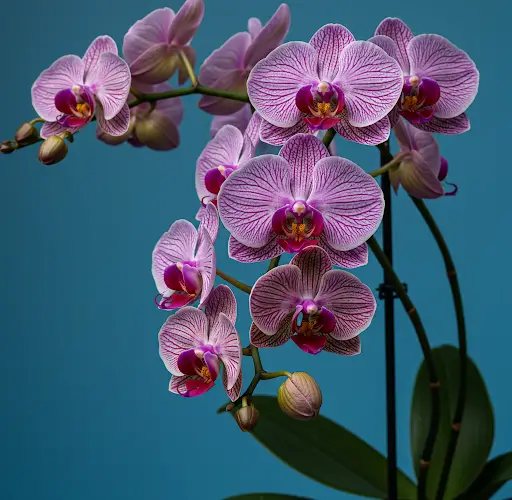Reviving Faded and Yellowing Orchids in Summer: Essential Tips
As the summer heat sets in, many orchid owners notice their plants fading or turning yellow. Today, I will share essential tricks to revive orchids that have weakened and lost their vibrant color. Proper care before autumn is crucial to help orchids grow multiple leaves and flowers. If you follow these steps, your orchids will flourish, producing healthy leaves and even new offspring.
Understanding Keikis and Root Health
The orchid I am holding has produced two keikis, which are small plantlets emerging from the mother plant’s branch. Healthy roots are essential for these keikis to grow strong. Orchid roots must be active, green, and alive to provide the necessary nutrients for new growth. If the roots are rotten or dried out, the orchid will struggle to thrive. To support the growth of keikis and healthy leaves, I will now demonstrate how to prepare a natural liquid fertilizer that will revitalize orchids effectively.
Preparing a Natural Liquid Fertilizer with Rice
One of the best natural fertilizers for orchids is rice water. This simple yet powerful fertilizer is packed with nutrients that promote healthy growth. Below is the step-by-step method to prepare and use rice water for your orchids:
Ingredients and Materials:
- 2 tablespoons of rice
- 500 ml boiling water
- 500 ml purified water
- A food processor or grinder
- A strainer
- A clean container for storage
Steps to Prepare Rice Water Fertilizer:
- Place 2 tablespoons of rice into a food processor and grind it into a fine powder.
- Add the powdered rice to a container and pour in 500 ml of boiling water.
- Stir well and let the mixture cool down completely.
- Once cooled, add 500 ml of purified water, making a total of 1 liter of rice water.
- Strain the mixture using a fine strainer to remove the rice pulp. The liquid should be smooth and free of solids.
- Store the rice water in a clean container for future use.
It is important to strain the rice water before using it on orchids. Any remaining pulp can cause mold or bacterial growth, which may harm the plant.
Reviving Orchids with Rice Water
Now that our rice water fertilizer is ready, I will demonstrate how to apply it to different types of orchids.
For Orchids with Rotten or No Roots:
- Take an orchid with completely rotten roots and weakened leaves. The leaves may appear soft and lifeless.
- Pour 8 tablespoons of rice water into a shallow dish.
- Place the orchid’s base in the dish, allowing it to absorb the nutrients slowly.
- Let the plant soak until the evening, ensuring it takes in the essential minerals.
For Orchids That Have Shed Their Flowers:
- Identify orchids that have dropped their flowers and started to fade.
- Trim off the fading flower branches and remove any rotting roots.
- Pour 8 tablespoons of rice water into a dish.
- Allow the orchid roots to absorb the rice water nutrients for a few hours.
- Repeat this process once a month to maintain healthy root growth.
Applying Rice Water to Orchid Leaves
In addition to nourishing the roots, rice water can also be used on the leaves to promote their recovery.
Steps to Apply on Leaves:
- Dip a clean napkin or cotton pad into the rice water.
- Gently wipe the orchid’s leaves with the soaked napkin.
- This method ensures the leaves receive essential nutrients, helping them regain their firmness and shine.
- Avoid letting excess water collect in the base of the leaves, as this can lead to rot.
Providing the Best Environment for Revitalization
After applying rice water, it is crucial to place the orchid in a suitable environment to maximize its recovery.
- Light: Position the orchid in a bright location with indirect sunlight, such as a well-lit window or an airy balcony.
- Ventilation: Good airflow is essential to prevent moisture buildup and fungal infections.
- Temperature: Keep the orchid in a warm but shaded area to avoid excessive heat stress.
Monitoring Progress and Expected Results
Over the months, orchids treated with rice water fertilizer show significant improvements:
- Weak orchids with rotting roots begin to grow new, healthy roots.
- Leaves that were once soft and yellow regain their firmness and vibrant green color.
- New keikis or flower branches may emerge, leading to fresh blooms.
Final Thoughts
Caring for orchids requires patience, proper nourishment, and environmental control. By using rice water fertilizer and following these simple maintenance tips, you can revive orchids that have weakened during the summer months.



